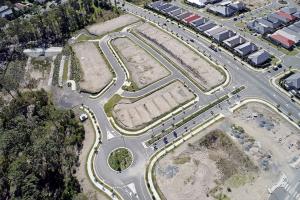Subdivisions are a great way for property owners to extract the full value of a large plot of land, though the process itself can be more complex than it initially appears.
Here’s everything you need to know before starting your subdivision project, and how you can achieve top results without spending a fortune.
What is Subdivision?
Used for residential, commercial, and industrial purposes, subdivisions involve partitioning a block of land into two or more smaller, independent lots.
One of the most common examples of this is when a developer subdivides property to build a suburban housing estate or ‘community’. This allows third parties to then purchase more manageable parcels for private use.
It’s important to note that standard plan subdivisions usually divide land only, not structures. Strata title divisions, on the other hand, include “house and land packages”, or buildings where individual sections (e.g. apartments) are sold or leased.
How to Subdivide Land
There are a number of steps in the subdivision process, and a host of government regulations to bear in mind throughout each. While this varies by state, the Queensland process follows three stages:
1. Town Planning Approval
A “Reconfiguring a Lot” development application is lodged with the relevant city council, and is generally approved within a matter of months. Certain areas of the Gold Coast and Brisbane may qualify for fast-track approval, if the application is considered low-risk.
2. Civil Works
Required works are completed in accordance with the conditions outlined in the approval. This can include land clearing, earthworks, roadworks, construction of retaining walls, and connecting prospective lots to utilities such as electricity, water, wastewater, and telecommunications.
3. Plan Sealing and Registration
After the development is finalised and all the conditions of the approval have been met, a plan of survey is submitted to the city council. Once sealed, the survey plan is submitted for registration with the Queensland Government. Appropriate land titles are then issued.

How much does it cost to subdivide land?
The price of these projects can vary greatly depending on the scope of works and how they are conducted.
While some expenses are unavoidable, such as the fees imposed by the council for development applications, plan sealing, and compliance assessment, there are thankfully ways of keeping your subdivision budget in check.
One such method is by partnering with a reputable civil construction and engineering company like OM Civil. Our extensive subdivision experience means projects are completed as swiftly, seamlessly, and effectively as possible. With a history of identifying time and money saving efficiencies, our expert engineers tackle the intricacies of the subdivision process so you can focus on best utilising the finished product.
OM Civil has developed a subdivision model that fast tracks the lot titling process. On our last project, we managed to title 70 lots within 16 weeks of the client purchasing the land. If you would like to understand this process then team up with OM Civil on your next project.
If you’re looking to have a subdivision project completed on-time and on-budget, or you need help with other civil works, get in touch with the friendly team at OM Civil today.


 BUS270
BUS270  license no. 15194376
license no. 15194376 
